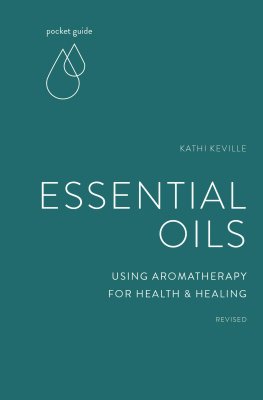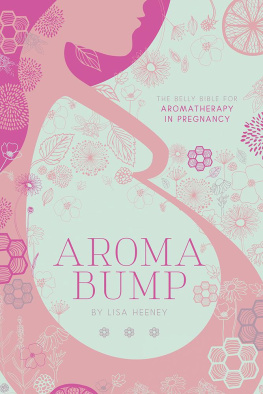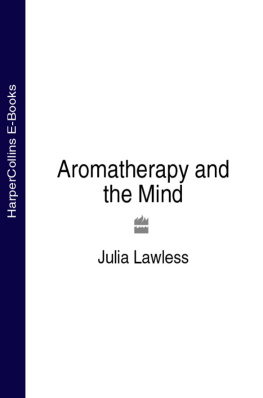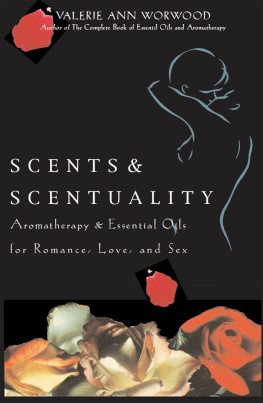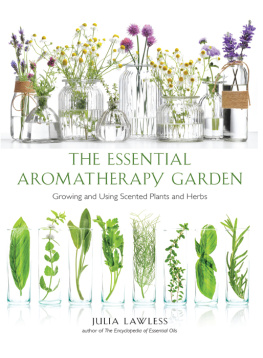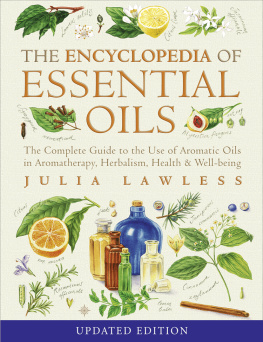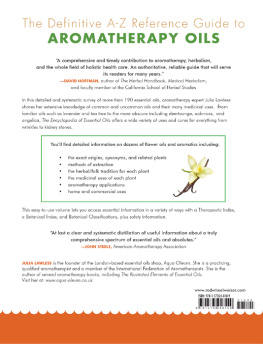the
AROMATHERAPY
GARDEN

Growing Fragrant Plants for Happiness and Well-Being
KATHI KEVILLE

Copyright 2016 by Kathi Keville. All rights reserved.
Photography by Karen Callahan, Caitlin Atkinson, Skye McNeill Kathi Keville, Mary Beth Rich, Rob Bertolucci, and Sarah Milhollin. Detailed photo credits appear on .
Published in 2016 by Timber Press, Inc.
The Haseltine Building
133 S.W. Second Avenue, Suite 450
Portland, Oregon 972043527
timberpress.com
Cover design by Nina Montenegro and Skye McNeill
ISBN 978-1-60469-753-7
Library of Congress Cataloging-in-Publication Data is available.
A catalog record for this book is also available from the British Library.
To my sister Janna Buesch, who inherited the same green thumb from our gardening ancestors in England, Holland, and Bohemia. To Eduarda Amondragon, who gave me my first parsley, sage, rosemary, and thyme plants and pushed me into the garden.

contents
introduction
A romas fill my garden and my house. This is nothing new. I have always loved fragrance. Since I was child, I have looked forward to the first aromatic spring flowers. There were also the outrageously fragrant roses in my grandmother Irenes porcelain potpourri jar. Her clothes were scented by the sweet lavender sachets she kept in her drawers. Grandmother Janna had a ceramic jar of freshly baked cookies. I could guess which treat was in store when she opened the lid and scents of cinnamon, almonds, or lemon floated out.

The author enjoying a noseful of yarrow. Lavender and rosemary are nearby.
I was blessed with a good nose, but also a green thumb. I certainly developed a passion for garden plants and design at a young age. My favorite haunts were the Los Angeles County Arboretum and Botanic Garden and the Huntington Library and Botanical Gardens, where aromatic plants bloomed year-round. I became fascinated with how intriguing plants from around the world were used by different cultures. This early exploration of ethnobotany evolved into university studies in art, psychology, anthropology, and history. What really paved the way for my lifes work were my first botanical booksall from the 1930s. They were Louise Beebe Wilders The Fragrant Garden, Helen Foxs Gardening with Herbs for Flavor and Fragrance, and A Modern Herbal, by Maude Grieve. These are books written for a different era, but they inspired my next forty-five years of plant work as an organic gardener, herbalist, aromatherapist, and researcher.
All of this inspiration and years of gardening experience pour into my writing. In these pages I will cover some of the fascinating science and history of our olfactory sense, and the wayssubtle and not-so-subtlethat it influences virtually all aspects of our human experience. From there, well touch on design and cultivation ideas that will help you make the most of fragrant flora. One of the most endearing aspects of many aromatic plants is their ability to carry and impart scent and flavor long after harvest, and I will suggest ways to put those long-lasting benefits to use. Finally, Ill share some of my favorite scented plants for gardens large and small.
It is a pleasure to share my experiences with fragrance, and the stories and uses of aromatic plants with you. May it encourage you to bring more fragrance into your garden and your life.

a tradition of scent in the garden

We cannot see or hear scent, making it seemingly less tangible than our senses of sight, touch, taste, or hearing. Step into a fragrance garden and it is almost magical how layers of aromas greet your nose completely unannounced. This delightful mix changes with amazing frequency walking through the garden. Some aromas dance across your senses while others are deep and exotic. There are familiar scents, while others leave you at a loss for words.

A gate marks the official entry to the authors garden, but heady fragrances announce its presence long before one arrives.
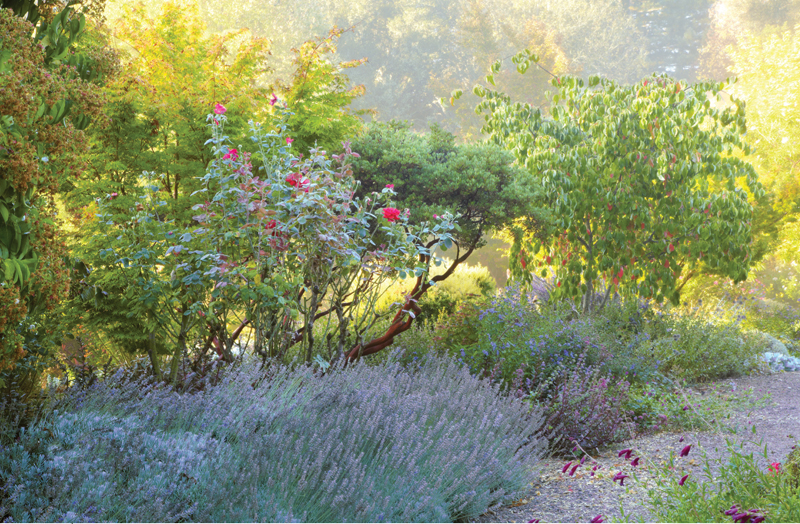
Some of the best paths to follow are fragrant.
We respond to these intriguing smells with sensual delight, but while fragrant plants are enticing us, they are also hard at work, modifying our mood and frame of mind every time we inhale. Plant scientists are discovering what gardeners have always known: the fragrant garden reduces stress. Heady plant aromas make us laugh and smile more, and leave us with a sense of contentment. Its not all about the human experience, either. Scent is also important in attracting pollinators, deterring predators, and even allowing plants to communicate with each other.
what is fragrance?
A bloom in full splendor, a cup of hot herbal tea, a favorite cologne, or the earth after a summer raina multitude of smells enrich our lives daily. The impact is profound. Scent enhances life experiences, such as tasting and sensuality. It is also the stuff of which dreams and memories are made. It embodies poetry, mythology, imagination.
Natures potpourri may seem enchanted, but fragrance is based on an assortment of invisible but very real aromatic compounds. They fit together like a puzzle to make up essential oils. These tiny oils easily float through the air, and can be released simply by pressing on a fragrant leaf.
Aromatic flowers, leaves, stems, fruit, roots, and bark typically concentrate essential oils in special cells. Different plant families have characteristic places where they store the oils. For example, most members of the mint family make and keep scent in fine, glandular hairs that cover their leaves. The carrot family prefers to hold aromatic essential oils in tubes in their seeds, or sometimes in their stems and roots. You can see this in plants like angelica, coriander, dill, and fennel.

The pungent aromas of Mexican marigold and sages are brought to nose level.
How we perceive aroma
Each time you inhale, tiny, aromatic molecules hitchhike a ride. Smell a rose or basil leaf, and the compounds you breathe are first greeted high in the nose by the olfactory epithelium: two small receptors that are about the size of dimes. These receptors use tiny cilia filaments to catch and identify molecules, seemingly by their shape. The information is sent to olfactory bulbs located at the base of the brain, which interpret it and send a report to the limbic system. That is where different scents are interpreted and sent to the brain, to analyze and coordinate with other senses. The limbic system also ties our sense of smell to emotions and memory. It distinguishes between aromas that draw us in and odors that fend us off. It determines when there is an emergency, such as smelling something burning. All of this happens in less than a second, making our perception and reaction to a scent instantaneous. You immediately identify the aroma as rose or basil, and think either bouquet or pesto.


